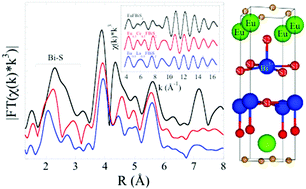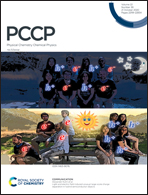The local structure of self-doped BiS2-based layered systems as a function of temperature
Abstract
We have studied the local structure of layered Eu(La,Ce)FBiS2 compounds by Bi L3-edge extended X-ray absorption fine structure (EXAFS) measurements as a function of temperature. We find that the BiS2 sub-lattice is largely distorted in EuFBiS2, characterized by two different in-plane Bi–S1 distances. The distortion is marginally affected by partial substitutions of Ce (Eu0.5Ce0.5FBiS2) and La (Eu0.5La0.5FBiS2). The temperature dependence of the local structure distortion reveals an indication of possible charge density wave like instability in the pristine self-doped EuFBiS2 and Ce substituted Eu0.5Ce0.5FBiS2 while it is suppressed in La substituted Eu0.5La0.5FBiS2. In compounds with higher superconducting transition temperature, the axial Bi–S2 bond distance is elongated and the related bond stiffness decreased, suggesting some important role of this in the charge transfer mechanism for self-doping in the active BiS2-layer. In-plane Bi–S1 distances are generally softer than the axial Bi–S2 distance and they suffer further softening by the substitutions. The results are discussed in relation to an important role of the Bi defect chemistry driven asymmetric local environment in the physical properties of these materials.



 Please wait while we load your content...
Please wait while we load your content...